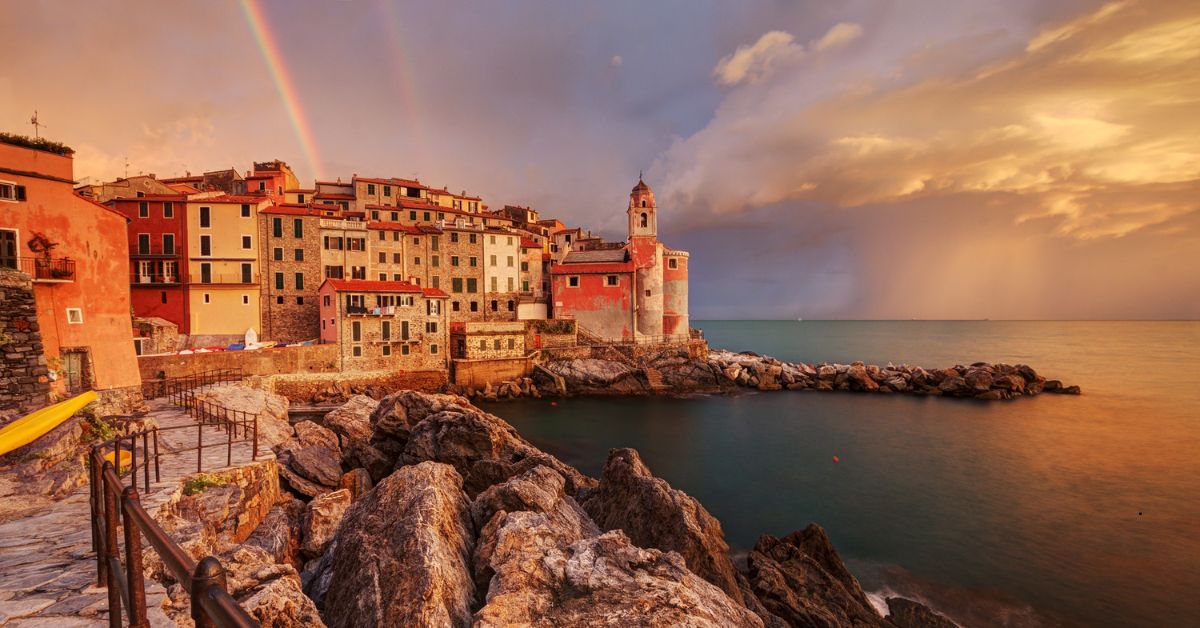Cinque Terre is a name that now carries global weight — a postcard image etched into the minds of every traveler flipping through glossy brochures or scrolling travel feeds. These five colorful fishing villages, precariously clinging to Liguria’s cliffs, have long captured the imagination. But their fame has come with a cost: slow-moving crowds, packed trails, and that creeping feeling that the place you’re visiting is performing more than it’s living. The Cinque Terre is beautiful, yes, but it’s hardly a secret anymore.
As I stood on a hot train platform in La Spezia, watching another wave of tourists spill out of carriages bound for Vernazza, I realized something. The very people who had come in search of quiet beauty were now part of a swelling tide, following the same map, eating at the same restaurants, and snapping the same photos. The charm of the Italian Riviera hadn’t disappeared; it had simply moved. Or rather, it had always been elsewhere, quietly, patiently waiting for someone to look beyond the obvious.
So here’s the truth: if you think the Italian Riviera begins and ends with Cinque Terre, you’re missing the real story. Stretching along Liguria’s rugged coastline from the French border to Tuscany, this region is a mosaic of medieval towns, sleepy harbors, and sun-drenched promenades. And it’s here, far from the flashbulbs of the tourist trail, where the Riviera’s true secret still thrives — in the overlooked, the less glamorous, the delightfully authentic.
Understanding the Italian Riviera — A Region of Contrast
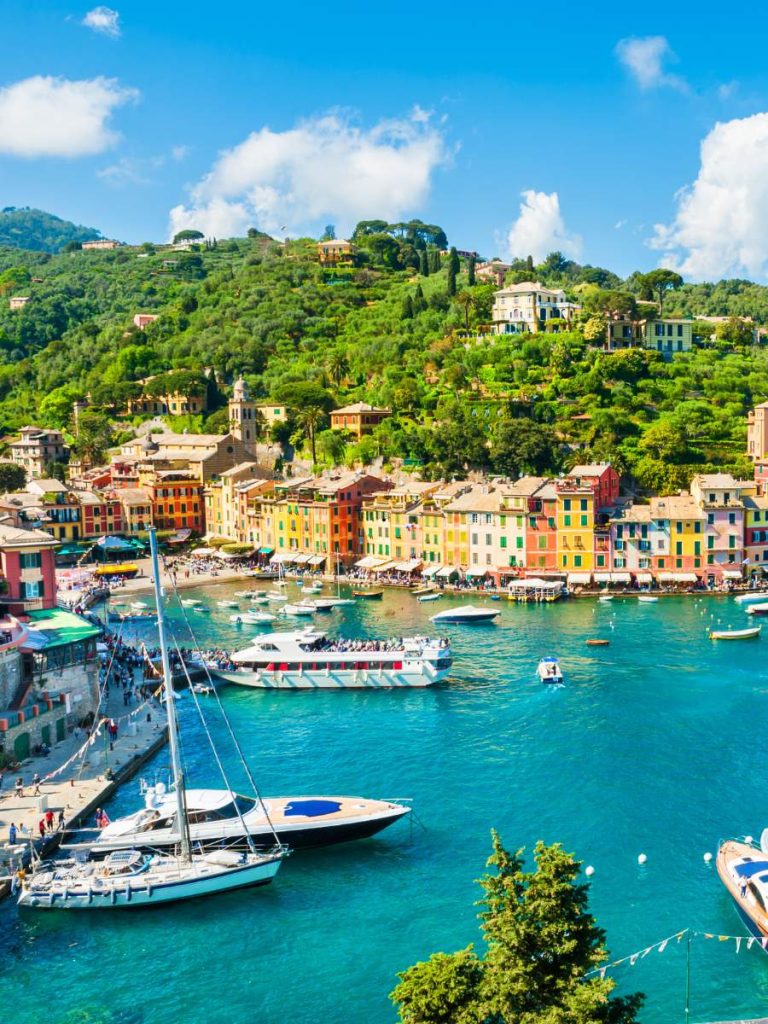
To understand the secret of the Italian Riviera, you first need to see its entirety, not just the highlight reels. The Ligurian coastline is split into two distinct halves: the Riviera di Ponente to the west of Genoa, and the Riviera di Levante to the east. While the Levante plays host to Cinque Terre and Portofino, it’s the Ponente that remains a mystery to most travelers, despite its miles of beaches, medieval towns, and Belle Époque grandeur.
What makes this contrast so interesting is how each side offers a different flavor of Italian life. The Levante is more dramatic and rugged, carved by cliffs and coves, while the Ponente is softer and more spacious — its towns more open, its sands more accessible. Each stretch has its own rhythm, cuisine, and charm. The Cinque Terre may draw the tour groups, but the west hosts a parade of quiet fishing villages and charming resort towns where Italian families still go for summer holidays.
For the curious traveler willing to wander off course, the Riviera holds endless rewards. It’s a region where time slows down, and the lines between tourist and local blur. You’ll find yourself in towns where no one hands you an English menu, where the gelato is served with a wink, and where the greatest views are free of crowds. The Italian Riviera’s secret isn’t a place — it’s a state of mind. And it begins in a town you’ve likely never heard of.
The Riviera’s Best-Kept Secret: Tellaro
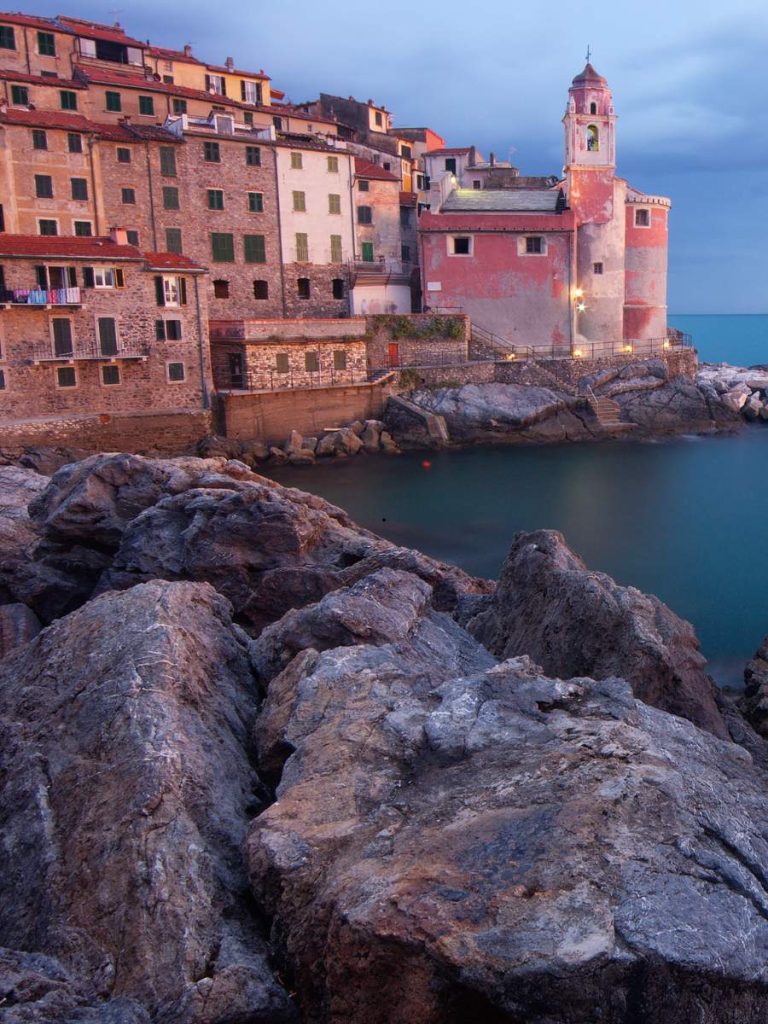
Tellaro is a name that rarely appears in bold in guidebooks, but once you walk its ancient stone alleys and hear the waves crash against its old seawalls, you’ll wonder how it has stayed a secret this long. Perched like a jewel on the Gulf of La Spezia, just a few coves away from the southern tip of Cinque Terre, Tellaro is a whisper of a town — a place where fishermen still tend to boats moored in a harbor no bigger than a soccer field.
It’s easy to fall under Tellaro’s spell. The buildings — painted in soft coral, faded ochre, and dusty pink — tumble down the hillside in a maze of lanes barely wide enough for two people to pass. Here, there’s no train station, no selfie sticks, no pressure to tick boxes. Instead, there’s the rhythm of Ligurian life: children chasing soccer balls on a sun-dappled square, the smell of grilled octopus wafting from a family-run trattoria, and the distant chime of a bell tower echoing across the gulf.
D.H. Lawrence called Tellaro “the village of silence,” and it still earns that title today. This isn’t a town that performs for visitors — it lives on its own terms. Come in the early morning and watch the mist lift off the sea. Stay until evening and watch the pink sky melt into the horizon. There are no lines here, no rush. In Tellaro, you rediscover what it means to travel for beauty rather than spectacle.
Sestri Levante: The Town of Two Bays
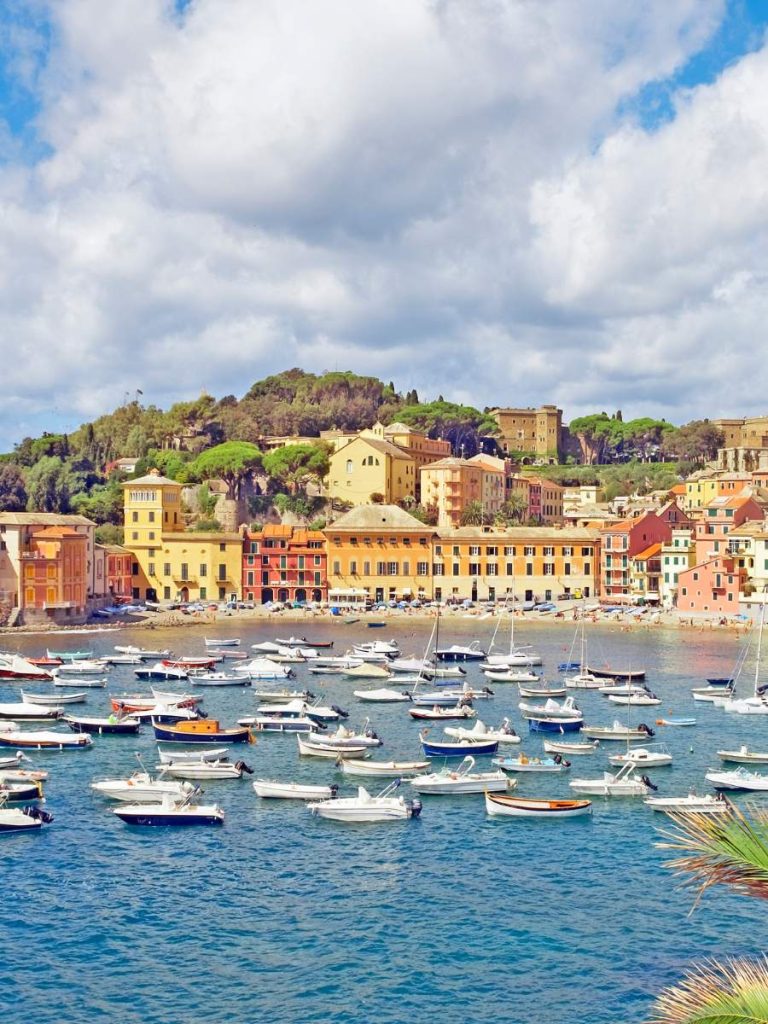
Halfway between Genoa and the Cinque Terre lies Sestri Levante, a town dramatically wrapped by two stunning bays: the Bay of Silence and the Bay of Fables. The name alone feels like something out of a storybook, and the town lives up to the fantasy. The Bay of Silence, with its crescent of golden sand and pastel buildings, is one of the most poetic seafronts in all of Italy. When the light hits just right at sunset, the water turns into a mirror, reflecting candy-colored houses in a painter’s dream.
Sestri is not a village frozen in time, but rather one that has gracefully blended tourism with local life. Italians from Milan and Genoa come here for long weekends, crowding into old-school cafes and chic beach bars. Yet, even in peak summer, there’s a balance — a sense that Sestri knows how to handle attention without losing its soul. Wander off the main promenade and you’ll find quiet alleys, tucked-away churches, and elderly locals chatting from their windowsills.
It’s also a town that rewards lingerers. Stay a few nights and you’ll discover that it isn’t just pretty — it’s layered. The Bay of Fables, named after Hans Christian Andersen, has a different feel: broader, windier, more alive with activity. Rent a paddleboat, explore nearby hiking trails, or simply savor the seafood pasta while a street musician strums a love song. Sestri Levante doesn’t ask to be discovered — it invites you to stay awhile.
Camogli: The Riviera’s Hidden Fishing Jewel
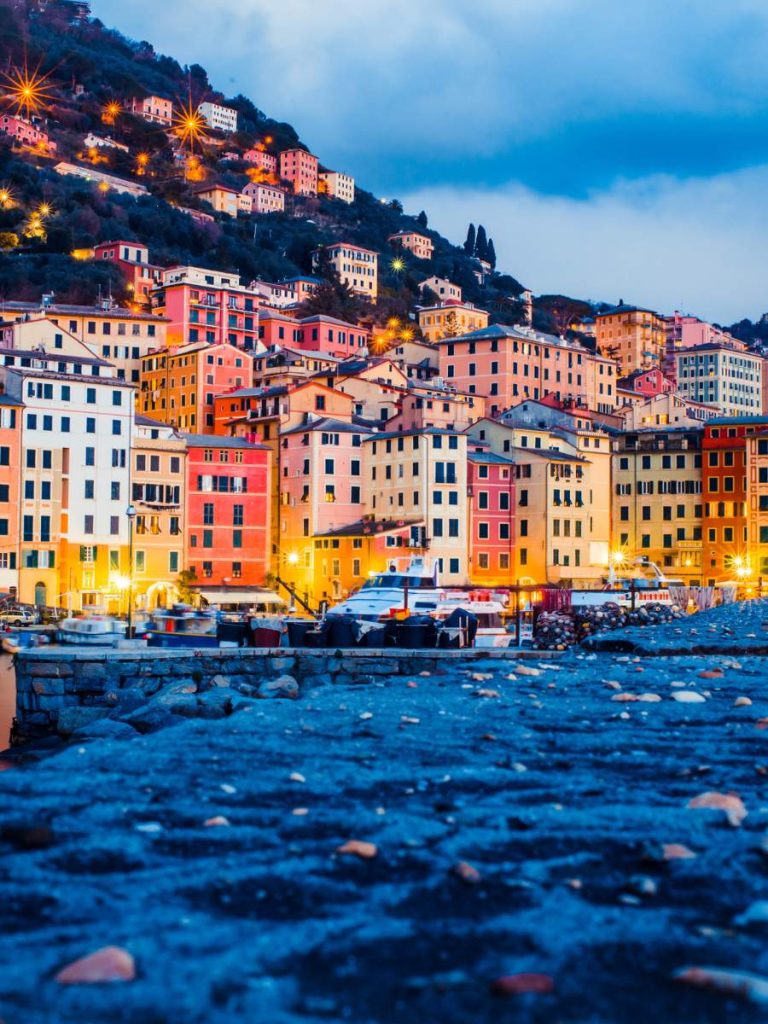
If I had to pick one place on the Riviera that feels like a secret shared between friends, it would be Camogli. Just a few train stops from bustling Genoa, this town seems to emerge from the sea in a dream. Its buildings, stacked high in citrus shades, line the waterfront like a row of dominoes about to fall into the Ligurian blue. In Camogli, the seafront isn’t for show — it’s for life: fishermen mending nets, teens diving off rocks, and locals enjoying aperitivo in the last golden light.
Camogli’s roots run deep. This was once a proud maritime hub, with ships that sailed to the Americas and beyond. You can still feel that salty legacy in the air, in the antique ship bells at the tiny maritime museum, and in the annual fish festival where giant frying pans serve up anchovies to cheering crowds. But this isn’t a place that clings to the past; it wears its history like a well-worn sweater — comfortable, familiar, lived-in.
What makes Camogli irresistible is its humility. It doesn’t try to compete with Portofino’s glitter or Cinque Terre’s drama. It simply exists, serenely and beautifully, for those who seek it. The beach is rocky, the waves can be rough, and the best meals come with paper napkins. But that’s the point. Camogli isn’t trying to impress you — it’s trying to feed you well and let you be.
Santa Margherita Ligure: Elegance Without the Pretense
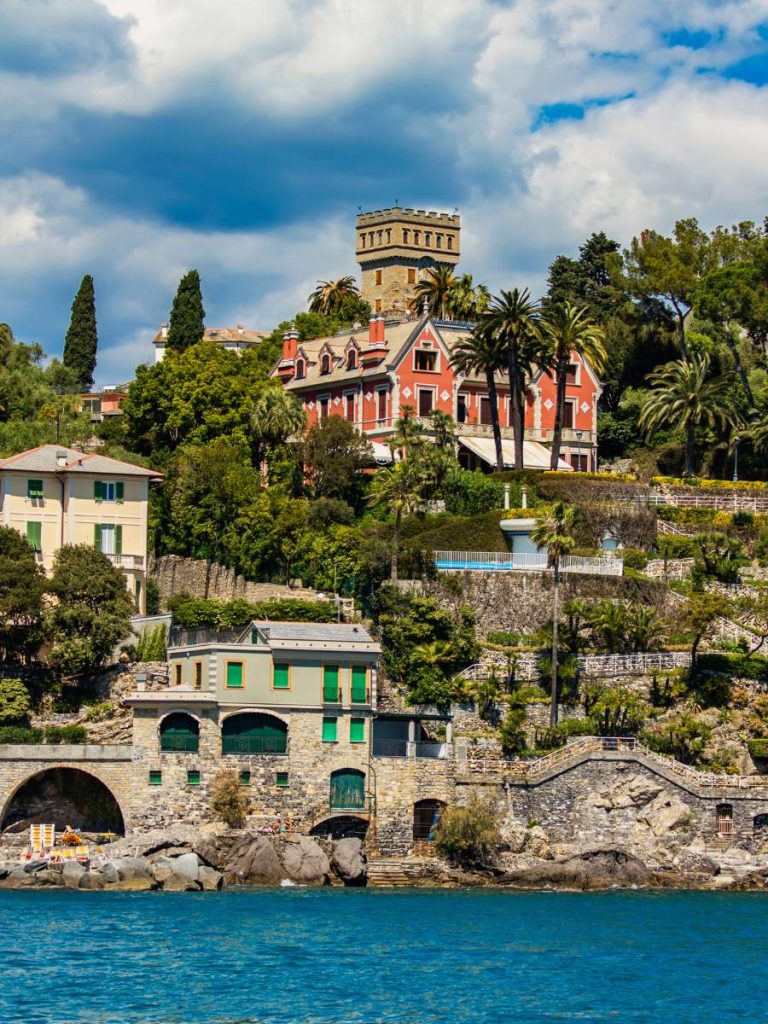
Just a few miles east of Camogli lies Santa Margherita Ligure, a town that feels like a blend of Riviera glamor and Riviera soul. It’s often seen as the stepping stone to Portofino, but to reduce it to that is to miss its quiet charm. With palm-lined promenades, Liberty-style villas, and old fishermen’s churches tucked among grand hotels, Santa Margherita is where elegance goes to relax.
Unlike Portofino, where everything feels curated and self-aware, Santa Margherita feels lived-in. You’ll see locals reading newspapers under awnings, children chasing pigeons near the harbor, and stylish grandmothers walking arm in arm. There’s a sense of ease here — of a town that knows how beautiful it is, and yet isn’t in your face about it. Even the luxury feels subdued: the yachts are smaller, the gelato is better, and you won’t need a second mortgage to order lunch.
What makes Santa Margherita special is its versatility. You can spend the morning on the beach, the afternoon hiking to Portofino along a pine-scented cliff path, and the evening enjoying seafood risotto in a piazza as old men play cards nearby. It’s the kind of place that feels more like a lifestyle than a destination — and it makes you want to move in, or at the very least, extend your stay.
Finalborgo and Noli: The Ponente’s Medieval Heart
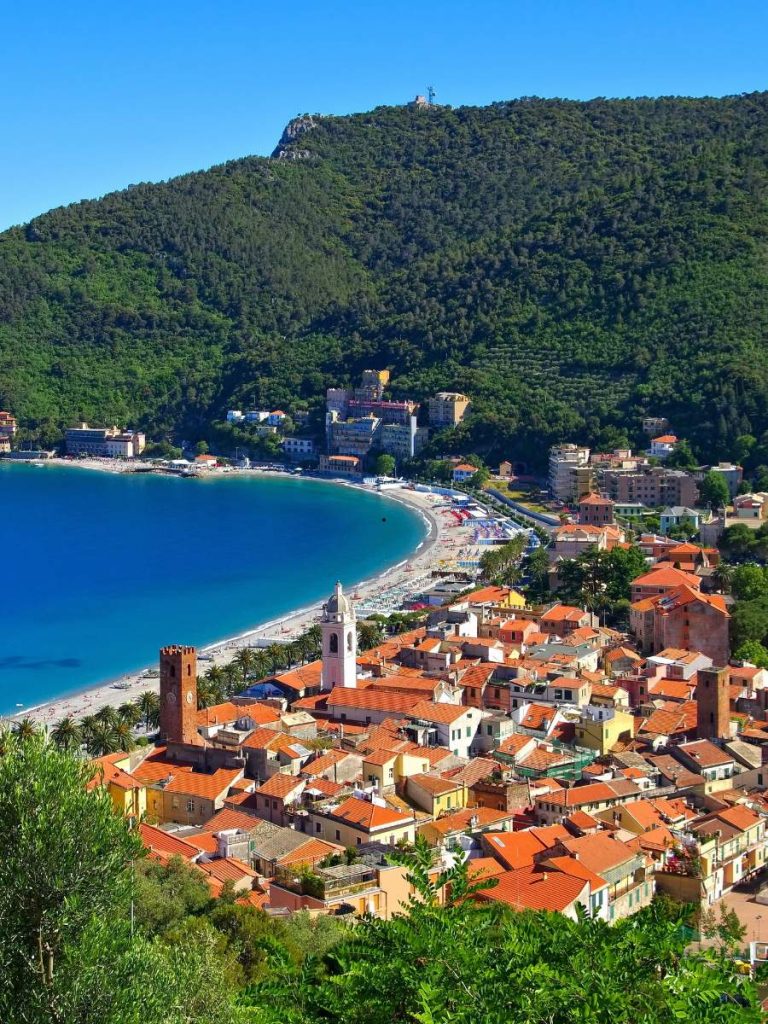
While most travelers swoon over the eastern Riviera, the western half — the Riviera di Ponente — remains curiously ignored. That’s a mistake. Tucked away here are towns like Finalborgo and Noli, places so rich in history and charm that they seem to have stepped out of a medieval manuscript. Finalborgo, in particular, is a revelation: a walled town filled with artisan shops, cobbled courtyards, and an energy that hums with authenticity.
Wander through Finalborgo and you’ll pass medieval gates, Renaissance facades, and tiny bakeries with window displays full of focaccia. Once the seat of a powerful marquisate, it’s now a haven for rock climbers, cyclists, and those who appreciate places that haven’t yet been Disney-fied. Everything feels real — from the clink of coffee cups to the smell of pine from nearby trails that lead into the mountains.
Just a short drive away, Noli offers a more maritime take on history. Once one of Italy’s great maritime republics, Noli now dozes by the sea, its towers and churches whispering tales of a prouder past. But the charm is all in the present: beachgoers stretched under blue umbrellas, fishermen untangling nets in the early morning, and the scent of fried calamari wafting through the narrow streets. Here, the Ponente Riviera reveals its true self — less polished, more lived-in, and utterly unforgettable.
Sanremo and Bordighera: Riviera Grandeur Without the Buzz
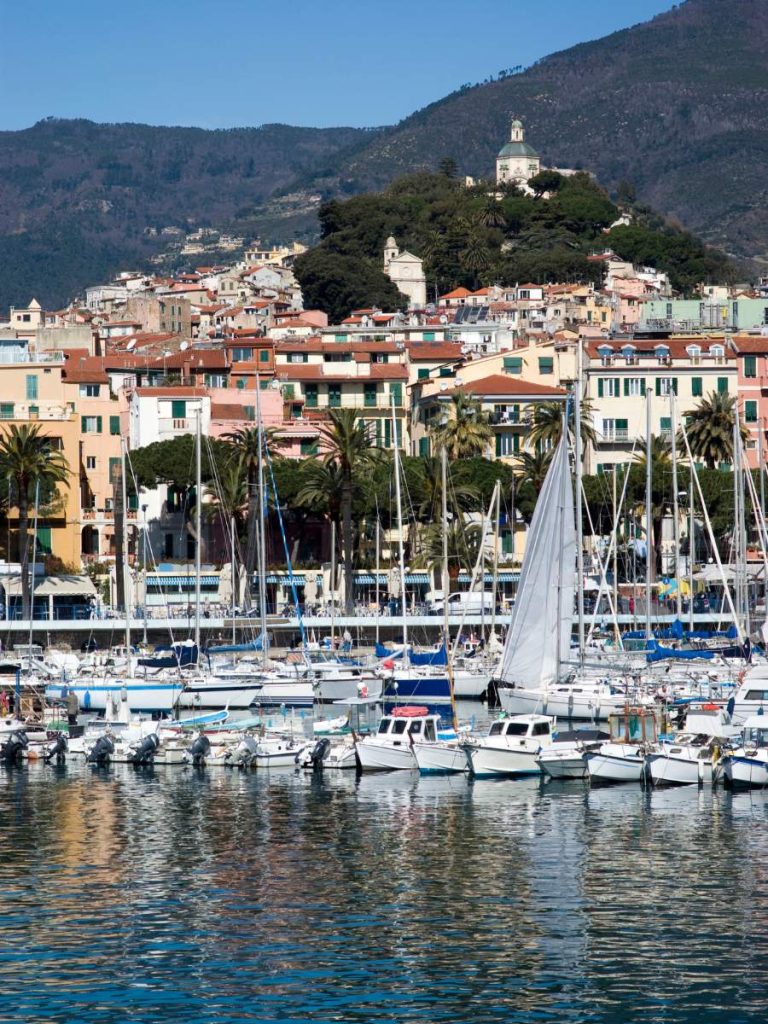
At the far western edge of Liguria, not far from the French border, lie two towns that embody the faded elegance of a bygone era: Sanremo and Bordighera. Sanremo was once the pearl of the Belle Époque, its casino glittering with nobility and charm. These days, the crowds have shifted east, and that’s precisely what makes it worth visiting. The grandeur remains — in its art nouveau villas, lush gardens, and seafront promenades — but it comes without the showmanship.
Bordighera, just to the south, is smaller, quieter, and utterly enchanting. Once loved by British aristocrats and Impressionist painters, it still feels like a canvas: palm trees sway above whitewashed villas, citrus trees spill over stone walls, and the Mediterranean glows a shade of blue that defies description. Monet painted here not once, but several times — and it’s not hard to see why. The light, the serenity, the gentle pace — it’s all here, still waiting.
These western towns offer an entirely different Riviera — one that whispers rather than shouts. They’re places for people who love beauty but don’t need to broadcast it. Stroll their gardens, sip a limoncello in an empty piazza, and watch the sun melt into the sea. Here, you’ll feel like a character in an old novel — and you’ll never once have to elbow your way through a tour group.
Why These Towns Remain Hidden
It’s not that these towns lack appeal — it’s that they lack marketing. In an age where travel decisions are driven by Instagram algorithms and TikTok trends, places like Tellaro or Noli rarely make the feed. They don’t have train stations with direct links from Florence or Rome, nor do they have hotel chains with loyalty points. What they do have is authenticity, but that rarely makes headlines.
Part of what preserves their charm is their inaccessibility. You often need a car to explore the Ponente towns, and you need patience to understand their rhythm. These are not places that roll out the red carpet for tourists — they ask you to slow down, to engage, to learn a few words of Italian. In return, they offer experiences that stay with you long after the sunburn fades.
The irony is, of course, that the very things keeping these towns under the radar are what make them extraordinary. There’s no branding campaign for Camogli. No influencer has yet ruined the Bay of Silence. And thank goodness. The Riviera’s secret is safe — for now.
How to Travel the Italian Riviera Like an Insider
Traveling this Riviera requires a different mindset. You can’t expect to see it all in a day, nor should you try. For the Levante side — with Camogli, Tellaro, and Santa Margherita — the train works well. It’s scenic, reliable, and connects the coastal gems with ease. But for the Ponente, a rental car is your key to unlocking places that trains don’t reach and tour groups don’t know exist.
Build an itinerary that allows for lingering. Spend two or three nights in a single place. Don’t rush from town to town, snapping photos. Sit down for long meals. Wander without Google Maps. Take the lesser-known path on a whim. Some of the best moments on the Riviera aren’t planned — they’re stumbled upon.
And don’t skip the obvious entirely. Portofino is beautiful, and the Cinque Terre still has its moments — especially if you visit in shoulder season. But pair them with places like Tellaro or Finalborgo, and you’ll see the full contrast. You’ll understand that beauty isn’t rare in Liguria. It’s just quieter than you thought.
When to Go and What to Avoid
Timing is everything on the Riviera. The best months are May, June, September, and early October — when the water is warm, the days are long, and the tourists are few. July and August bring crowds, heat, and inflated prices. While it’s still doable, it’s not the Riviera at its best. Aim for the shoulder seasons if you want to feel the rhythm of local life.
Some towns come alive during festivals. In Camogli, the Sagra del Pesce in May turns the harbor into a giant seafood celebration. Sestri Levante’s Andersen Festival in June fills the town with street performers and music. These moments offer a glimpse of tradition and community — and a good excuse to visit beyond the obvious.
What you should avoid most is the urge to check towns off a list. The Riviera isn’t meant to be conquered. It’s meant to be lived — slowly, deliciously, and with curiosity.
A New Way to Experience Liguria
At its heart, travel is about discovery — and the Italian Riviera is full of discoveries that most people never make. You won’t find them in the headlines. They won’t appear in top-10 lists or viral videos. But they exist — in a crumbling bell tower, in a grandmother’s handwritten menu, in a harbor where the fishing boats outnumber the yachts.
Cinque Terre may have put the Riviera on the map, but it’s the places that tourists skip that keep its soul alive. These are the places where you’ll feel the weight of centuries and the lightness of being. Where every alley smells like fresh bread or blooming jasmine. Where beauty doesn’t ask for attention — it just exists.
So go. Seek out these secrets. Whisper them only to your favorite travel companions. And remember: in Liguria, the real treasure isn’t behind a ticket booth or a crowded trail. It’s in the quiet — and it’s still yours to find.

